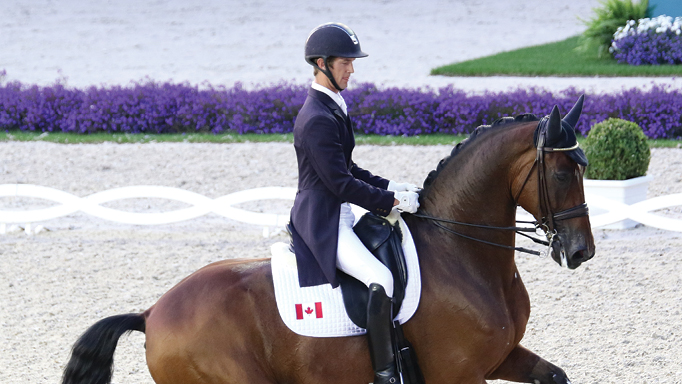For many riders, the struggle may stem from a lack of solid basics, or a simple misunderstanding of just how active a “quiet” hand really is.
Pan Am Games silver medallist Chris von Martels of Ridgetown, ON, says the secret to his own enviable hands is simple: many, many years of practice. “Having a quiet hand is something I feel is very important in order to create true harmony and contact with your horse. A lot of riders struggle with not having quiet hands for several reasons: first, because of a lack of connection, or acceptance of the contact. The horse has to have an honest, soft contact in order for the rider to have a quiet hand. Second is the rider’s weak seat and lack of core strength in the saddle. Riders must not use their hands for balance. I also often see riders using their hands to try to create impulsion, which obviously never works. The horse must be honestly in front of your leg.”
Von Martels is quick to point out, however, that still hands are not the same as quiet hands. “Quiet hands must not become static or stiff. Most of the time, stiff or too-still hands create stiff and strong horses. Riders often make this mistake in fear of doing too much with their hands. The reality is you have to use your hands, but in a soft and dynamic way.
“Another common mistake I see is riders with their hands held too high, which often makes the horse short in the neck and causes him to drop his back. High hands can also create too much angle from the hand to the mouth, which can become a sharp or severe rein aid and make some horses nervous or afraid of the bit.
“The most important thing to remember is that the horse must follow your hand, which comes from having proper contact and throughness. The ability to make easy and fluid variations in the horse’s frame and bend is a direct reflection of how well your horse will follow your hand, and of course remain in front of your leg.
“In training, I often make several changes of frame within one movement to check if my horse is following my hand. For example, in a training pirouette I might start with a low round frame and a lot of bend on a bigger dimension, and then make the turn smaller in a higher, open frame.
“The best way to achieve quiet, yet effective hands is to obsess about the basics. The horse has to be in front of the leg, he must accept the contact, the rider must have good balance and a strong seat/core, and the horse must be through over the back and follow the rider’s hands.”

